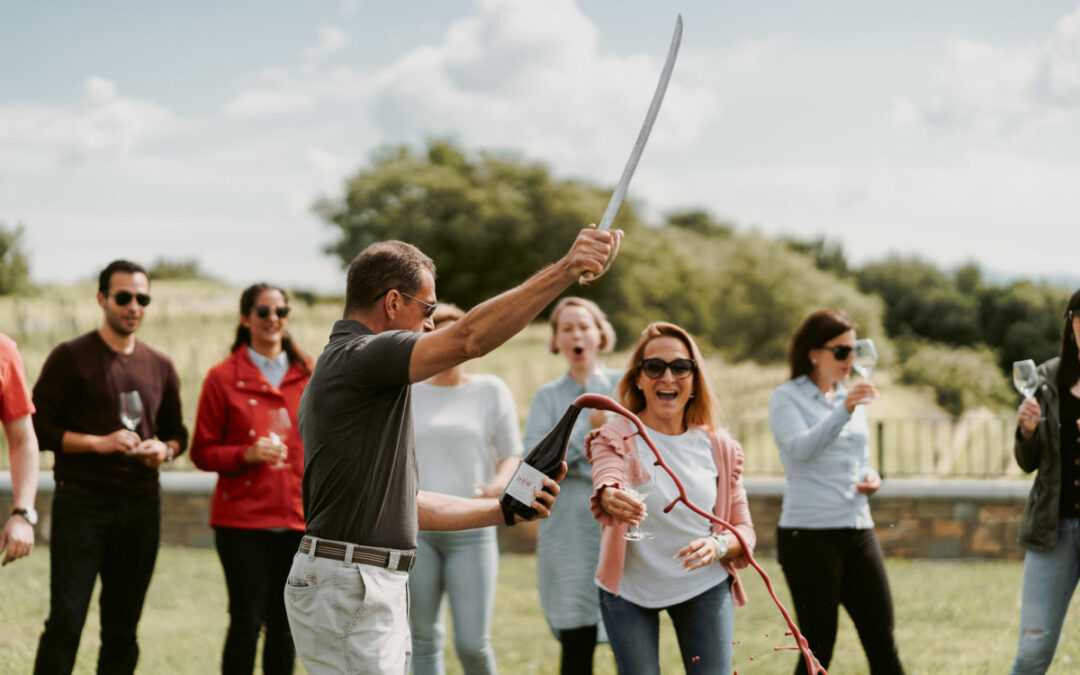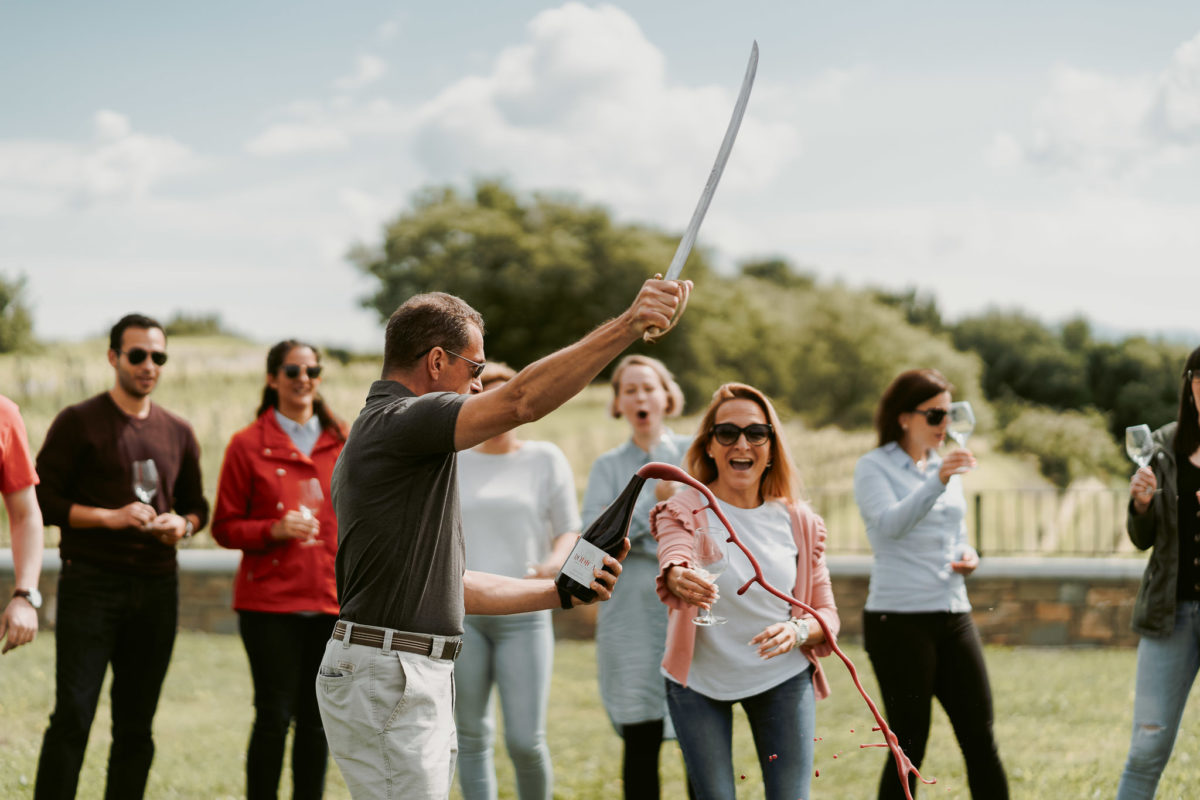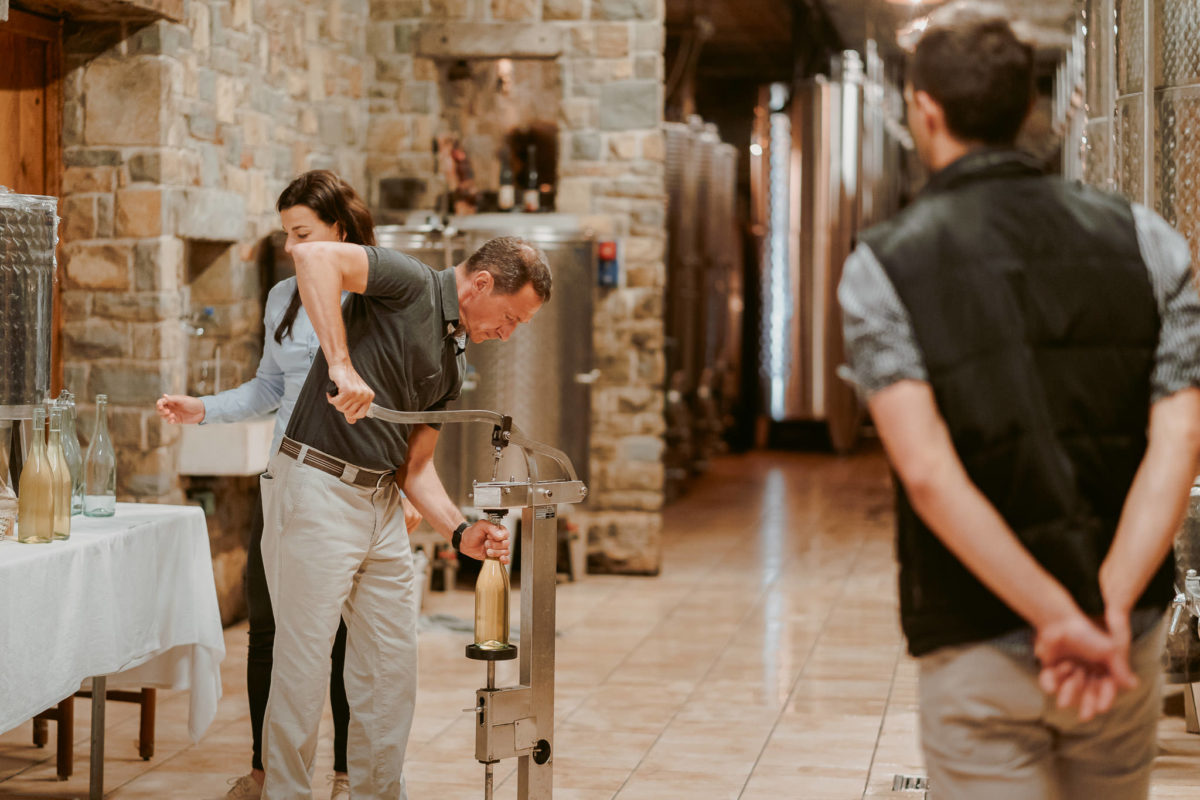
by Adam Chase | Dec 18, 2019
3 winegrowing regions, 28,000 wineries, 52 varieties of grapevine, 2 million people, one, incredible, wine tour

Whether you’re a wine connoisseur or someone who enjoys the odd droplet with their meal, a visit to Slovenia may quickly transform you from the latter into the former. Why? Because wine in this country is just so good.
A WINE TOUR IS A GLIMPSE INTO SLOVENIA’S VAST VITICULTURAL HERITAGE
Provenly the best way to try the exquisite flavours of Slovenian wine while getting to know the land and the people who make it is by joining a wine tour. It’s a first-hand experience that will introduce you to this country’s ancient, rich and highly respected winemaking tradition.
If you wanted to explore Slovenia’s numerous wine trails, you would have to take a year off just for travelling around its multitude of vineyards and wine cellars. It might be a small country, but its viticultural heritage is just so vast and complex. By joining a wine tour, you can get a glimpse into our world of wine and taste an assortment of top-class products in one amazing trip.
SLOVENIAN WINE IS TRADITION IN LIQUID FORM

Climate, soil, and tradition. These are the main ingredients for top quality wine. Slovenia has all three. The history of viticulture in this place stretches all the way back to the 5th century BC, when Celtic tribes first began cultivating wine, long before any major European winegrowing regions. Today, the tradition of winemaking is stronger than ever. All thanks to Slovenia’s unique geographical diversity, providing a perfect mixture of microclimates that give life to 52 varieties of grapevine.
Although its population is only two million strong, Slovenia is home to 28,000 wineries, which translates to 1 vineyard per 70 inhabitants. Talk about a national hobby. Out of the annual production in excess of 80 million litres, 6 million litres of wine are exported, the rest is consumed locally. And who can blame them, since most of the country’s wine is of high quality. One more reason to come over and taste it for yourselves.
WHERE MEMORIES ARE MADE AND FRIENDSHIPS FORMED
Do you know how many incredible stories get told over a glass of fine wine? Of course not. Nobody does. There’s simply too many. Drinking wine is a social activity best enjoyed with some authentic local cuisine with other jolly wine tourers. When your company also includes local experts and a sommelier guide, you’re in for a very educational and fun time indeed.
Boutique winemakers, whose winemaking skills have been passed down through generations, will gladly share a few insider anecdotes, background stories, history of the land, and show you the ins and outs of their winemaking processes. These are the bonus features of our wine tour that you won’t get in any travel guide. Witty wine cellar wisdom included. It’s an interactive experience that takes place in Slovenia’s breath-takingly beautiful Vipava Valley, home to some of the world’s best wines.
Take a walk through the vineyards, soak up the natural splendour that surrounds you, and treat yourself to Slovenia’s most precious beverage. Life is good, so hop on a wine tour and make it even better.
Cheers!
WRITTEN BY: TOM SMITH

by Adam Chase | Jul 30, 2019
There is no better way to learn about wines than to travel the vineyards where the grapes are grown. Photos in books and videos are great, but they are framed to give the best view and evoke a desired image. As a wine educator, being “on the ground” makes me see things in a new way and makes me a better teacher. This past June I spent two weeks traveling from Chablis in the north, through Burgundy and then down the Rhone into Provence. My random thoughts are below. WSET students will get more details n classes starting next month.
Chablis
Chablis is a little “off the beaten track” if you are visiting Burgundy, but it is worth the detour. The village itself is incredibly pretty with classic French architecture, the peaceful Serein River running through the town, and the vineyards a two-minute walk from the town center. The Vineyards here are so close to the working town center that they actually almost “grip” one end of Chablis center. You realize the amount of vineyard land is not huge. Grand Cru hill sites quickly curve and slope into Premier Cru and basic vineyards. Luckily there is an easy to read map that identifies each site. The map sits at the foot of the small street that separates the agricultural area from the central part of town.
If you visit Chablis a stop at the tasting room of William Fèvre is a good idea. The wines are terrific and you can see large samples of the Kimmeridgean Clay soils, with their tiny fossilized sea creatures clearly visible, as well as Portlandian Clay, which is much different. A great place for lunch is Les Trois Bourgeons. This classic French restaurant is run by a Japanese couple and the food is fantastic!
Cote de Nuits
When you are anywhere in Burgundy’s Cote d’Or you really feel how the vineyards hug the eastern Massif Central. One commune flows into another. As you travel the main N74 road, the vineyards are a constant companion a stone’s throw to the west. What is even more surprising is how close these world-famous expensive vineyards are to the big city of Dijon. Essentially, they are southern suburbs of Dijon, and as you drive first through Marsannay and then Fixin and Gevrey-Chambertin you feel like you are traversing two worlds: behind you is the big city, to the west magnificent pastoral vineyards and to your east a suburban landscape with bowling alleys, car dealerships, KFC and pizza places and hotels. A little jarring but it shows that these are working grape farms rather than ethereal landscapes.
As you drive into the vineyards themselves thick vine density comes off the page and into reality. Driving paths are narrow and vineyard land is maximized. Books point to this fact, but to see it and navigate it as you pass from one great site to another really brings it to life.
Cote de Beaune
The villages of the Cote de Beaune can be described with one word: “charming.” Meursault, in particular, is quaint and beautiful with its central square, fountain and winding paths to vineyards. I recommend grabbing a morning coffee there and just people watching or day dreaming.
The vineyards in this area seem designed to encourage you to take long lingering walks. Vines are easily accessible and a two-minute walk from any part of a town. One of the things that you realize when you are among the vines is how easy it is to have one foot in a Grand Crus site and the other in a more basic site. The Grand Cru and Premier Cru sites are also much less steep when you are among the vines than when you see them on a map. Always at your feet is the classic clay and limestone soils.
Beaune itself is an easily navigable small city with the eastern vineyards watching over it as a protector. The tile designs on the roofs of the Hospices de Beaune gleam in the sun and make this part of Burgundy unique. One realizes immediately that you are in a city of business with large buildings with famous names like Louis Jadot and Joseph Drouhin around you but blending in to the classic city architecture. The restaurant that seems to be among the most popular is Ma Cuisine and I would agree – amazing food and a terrific wine list.
Cote Rotie and the Rhone
As with the Cote de Nuit flowing out of Dijon, the Cote Rotie vineyards almost touch the outskirts of the city of Lyon. Standing in the tiny town of Ampuis, the height and steepness of the slopes of these vineyards seems even more staggering than photos. You can see how hard they are to work and how the staked vines create a unique pattern on the steep slopes.
The Rhone is a working river and the peaks and valleys of its northern hills look down upon a waterway that is far more industrial than a wine book can show. It is easy to grasp why one hill is planted and another is not based on angle to the sun and reflection from the river.
As you drive south the hills become less steep but don’t entirely go away. Yes, the Southern Rhone vineyards are more spread out and the not as cliff-like as the north, but they are not completely flat either. Vines live next to vibrant fields of lavender and other crops. Wind breaks from trees are evident as a protection from the Mistral. Driving into Chateauneuf-du-Pape the galet soils create a rocky landscape that reflects the sun and adds brightness to the sun light. Stop by Vieux Telegraphe for a tasting of their amazing wines and then walk the vineyards which give a great view of the surrounding region.
Bandol and Cassis
The vineyards in Provence live easily among coastal towns and internal cities. The Alps gently extends to the sea here and creates a dramatic landscape which inspired painters like Cezanne and Van Gough. Driving the coast from Cassis through Bandol is a great way to get a feel for the area and its vines, but to really see the area you need to go up and inland. Bandol AOC is actually made up of towns, including Bandol itself. Mourvedre vines thrive in the damp soil and hot air.
Domaine Tempier is the place to go first to taste. It is in the village of Les Castellet and really led the change to fine modern winemaking in the area. Véronique Peyraud, daughter of founders Lucien Peyraud and Lucie Tempier is a terrific host and the wines are worth the accolades they continually receive.
Hopefully my thoughts have prompted you to visit the area – or even better, take a WSET class and then visit. You will be armed with information that will make the trip even better!




